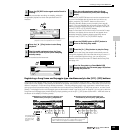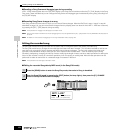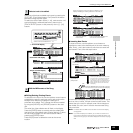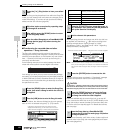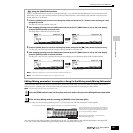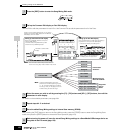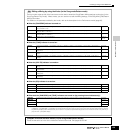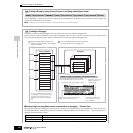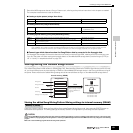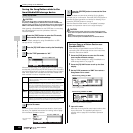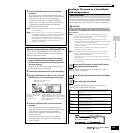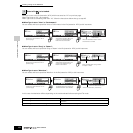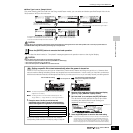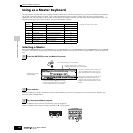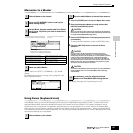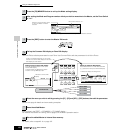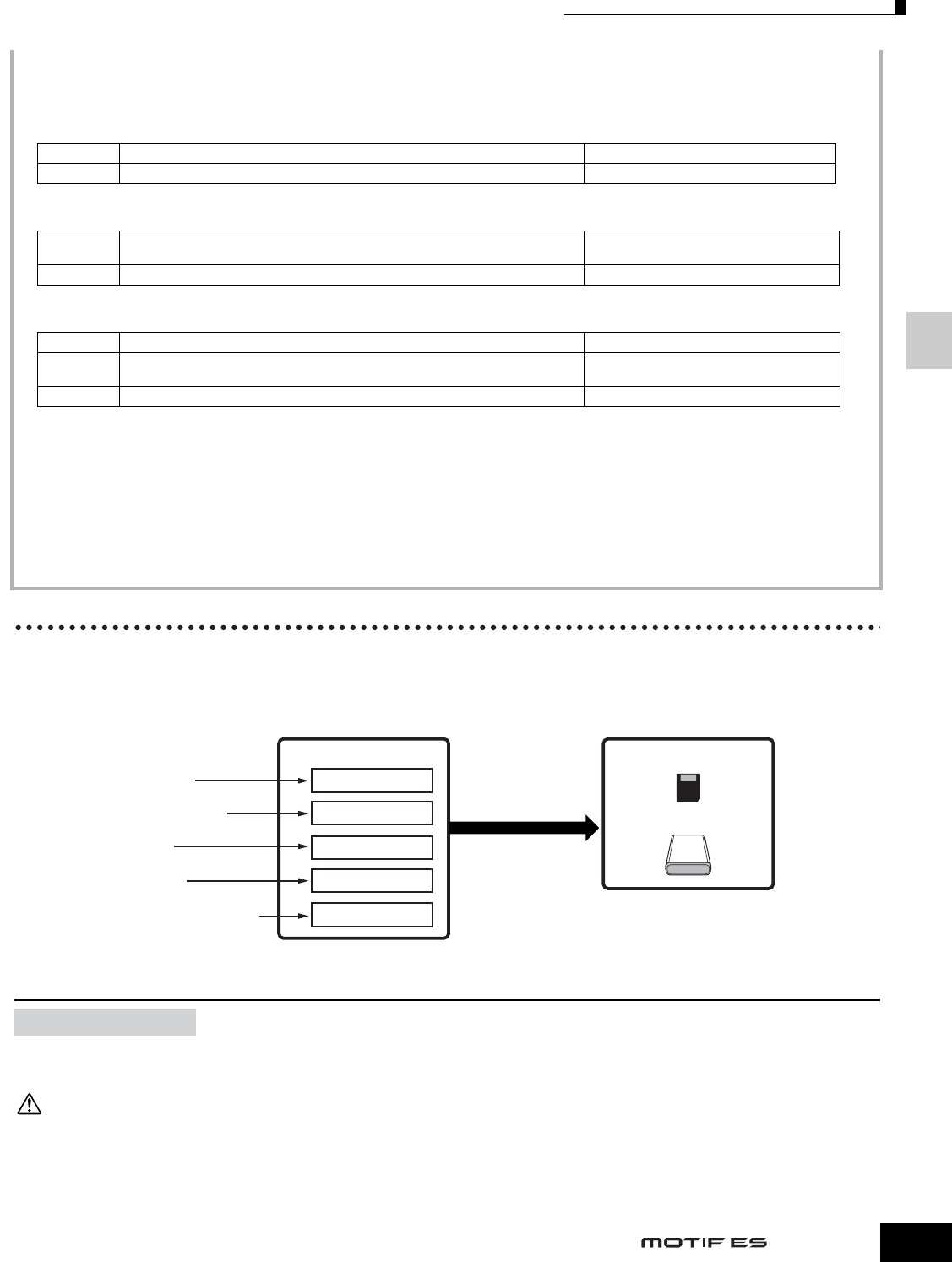
Creating a Song on the MOTIF ES
131
Owner’s Manual
Quick Guide — Advanced Course
Record the MIDI sequence data to a Song or Pattern track, referring to the previous instructions in this chapter as needed.
The examples listed below are used as reference.
● Creating a rhythm pattern (using a Drum Voice)
● Creating a bass line (using a Normal Voice)
● Creating a guitar backing (using a Keyboard Mega Voice)
n Up to 16 unique note numbers can be recorded to the Arpeggio track. (This does not apply to multiple instances of the same note number.) If more
than 16 different note numbers have been recorded to the MIDI sequence data, the Convert operation reduces the notes in excess of the limit.
Because of this, be careful to record only up to 16 different notes when you create an Arpeggio, especially when using all four tracks.
■ Convert type which determines how the Song/Pattern data is converted to the Arpeggio data
The Arpeggio data created via the above instructions is stored on internal Flash ROM, meaning that it will not be lost, even
if you turn the power off. When saving the Arpeggio data to a SmartMedia/USB storage device, set the file type (TYPE) to
“All” or “UsrArp” in step #3 described on page 132.
Storing/Saving the created Song/Pattern
The created Song/Pattern data resides on DRAM (page 187). Because data contained in DRAM is lost when the power is turned
off, you should always save any data residing in DRAM to a SmartMedia/USB storage device in the File mode before turning off
the power. Please note that the edited Mixing settings should be stored before saving to a SmartMedia/USB storage device.
Storing the edited Song Mixing/Pattern Mixing settings to internal memory (DRAM)
Press the [STORE] button to enter the Song Mixing Store mode/Pattern Mixing Store mode, then press the [ENTER] button to
execute the Store operation. The Mixing settings are actually stored to a Song/Pattern by executing the Store operation.
The currently edited Mixing program will be lost when selecting a different Song/Pattern or going to a different mode without storing it to the current Song/
Pattern. In addition, simply playing back the Song/Pattern or receiving any MIDI messages from an external MIDI instrument may change the current Mixing
program.
Make sure to store the Mixing program before executing these operations.
Track 1 Record a basic rhythm pattern using various drum instruments. ➔ Convert via “Fixed.”
Track 2 - 4 Record a different rhythm pattern using a specific drum instrument to each track. ➔ Convert via “Normal.”
Track 1 Record a bass line using a specific desired key (root). ➔ Convert via “OrgNote” after the
OrgNotesRoot is set.
Track 2 - 4 ➔ off
Track 1 Record a guitar backing part using a specific desired key (root). ➔ Convert via “Normal.”
Track 2 Record a different rhythm using one of the “special” sounds, such as a finger
mute or scratching noise.
➔ Convert via “Fixed.”
Track 3 - 4 ➔ off
[MIXING] →→
→→
[STORE]
Mixing Edit
Song/Pattern
SmartMedia
USB storage device
Save
Store
Store
Internal memory (DRAM)
Mixing Voice Edit
Record
Sampling
Settings in the Play mode
Mixing
Mixing Voice
MIDI sequence data
Sample
Groove, etc.
File extension: W7A
File extension: W7S
File extension: W7P
Save all Songs or Patterns
in internal DRAM as a
single file.
CAUTION



